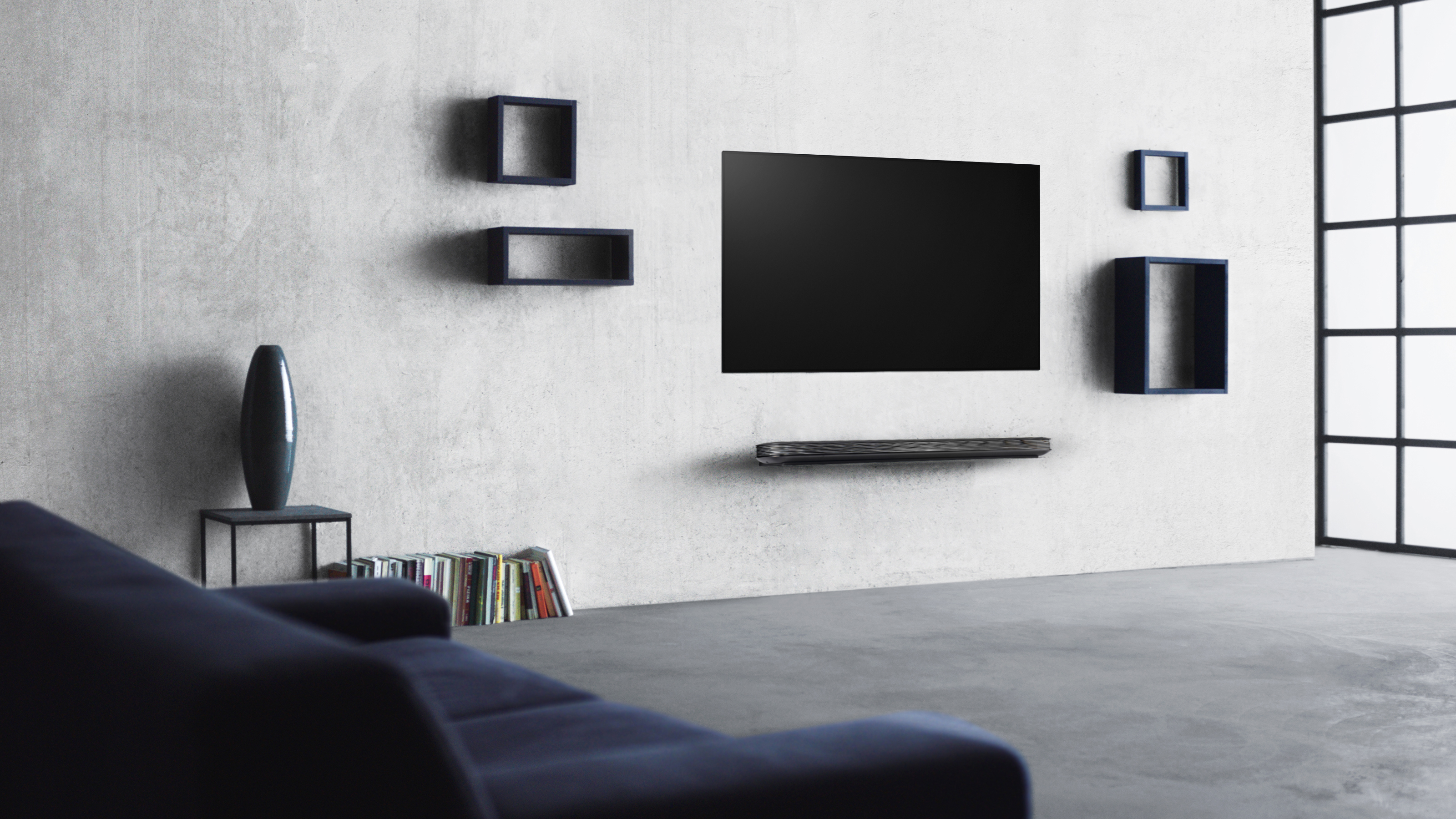
LG’s best and brightest consumer-ready TV is the LG SIGNATURE OLED TV - a continuation of last year’s W7 OLED that we loved but with a new ‘Alpha 9’ processor. The TV comes equipped with a 4.2 Dolby Atmos soundbar attached via a flat cable that runs into the TV itself - the latter of which still measures in at an unbelievably thin 3.8mm from front to back.
It’s hard to walk away unimpressed after spending time with the LG SIGNATURE OLED TV. It’s slim, fits seamlessly onto the wall and it comes with a Dolby Atmos soundbar. LG calls the design aesthetic ‘Wallpaper TV’ and, put in front of a non-techy, it would definitely give the illusion of a beautiful art display flushed against the wall. The bezel-less display further creates the illusion of a painting, with stunning colours and perfect blacks.

The LG SIGNATURE OLED TV’s use of the soundbar also doubles as its primary source to route cables in and out of the TV. This solution keeps those unsightly HDMI cables from all our sources hidden giving the television a nice clean look on your wall. It also employs a magnetic mounting mechanism that is supremely easy to setup.
We’ve gushed many times about the inky black levels and colorful images that are produced because of the goodness that is OLED panel technology. The LG SIGNATURE OLED TV also features comprehensive support all four kinds of high dynamic range formats - HDR10, Dolby Vision, Advanced HDR by Technicolor and HLG. This will work in tandem with LG’s proprietary HDR Pro and HLG Pro technology that works on a scene-by-scene basis to find the correct balance between low-points and highlights.

New this year is LG’s use of the Alpha 9 processor for better contouring between areas of bright light and darkness (like, say an image of a moon on a dark night) and motion processing. It’s not only brighter, but holds up with the action better, making sure that images stay clear as the camera pans from shot to shot.
The Alpha 9 processor also enables a massive leap in the look-up table - a term you’ll be hearing a lot from LG. A look-up table is a way to color correct source input. Using what’s called a 3-D reference table, colors can be corrected on an individual basis - if a blue is too blue, for example, it can be made less blue without impacting the green or red tones in the same image.
Get daily insight, inspiration and deals in your inbox
Sign up for breaking news, reviews, opinion, top tech deals, and more.